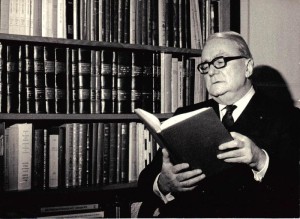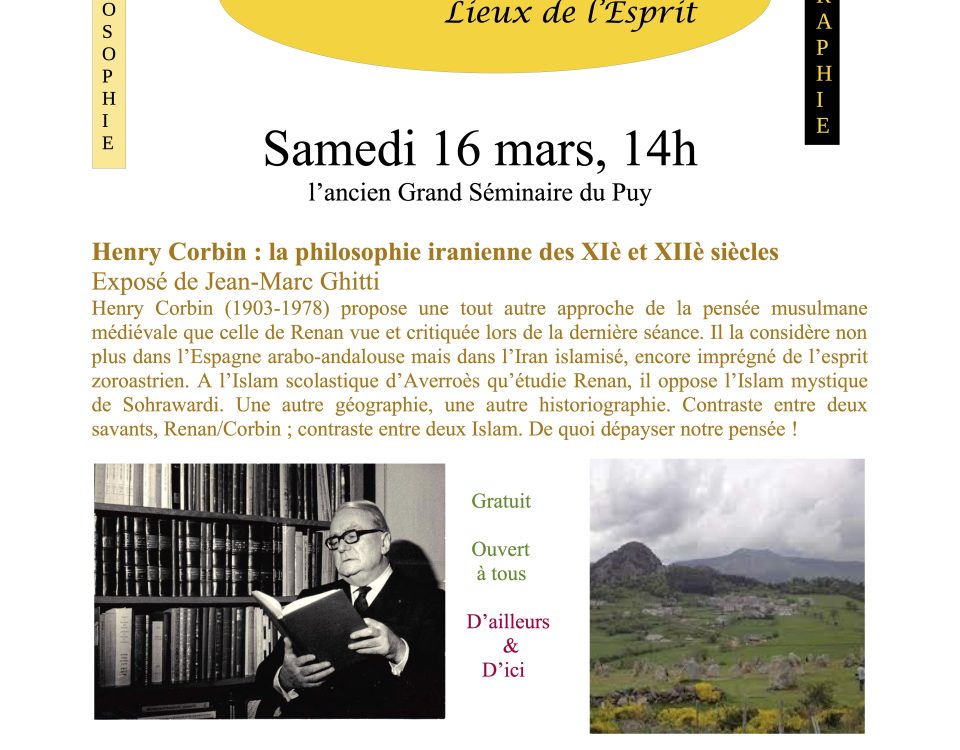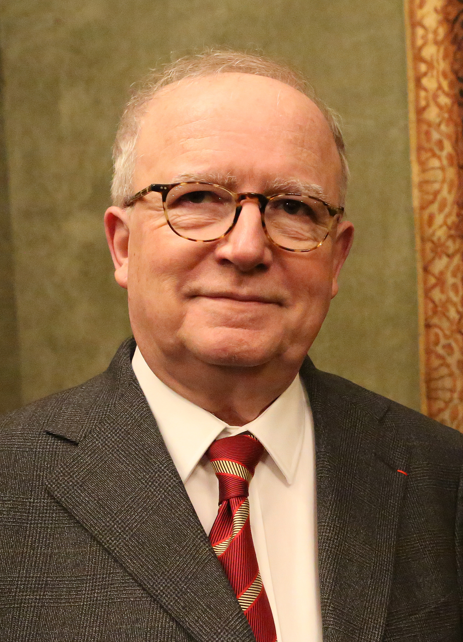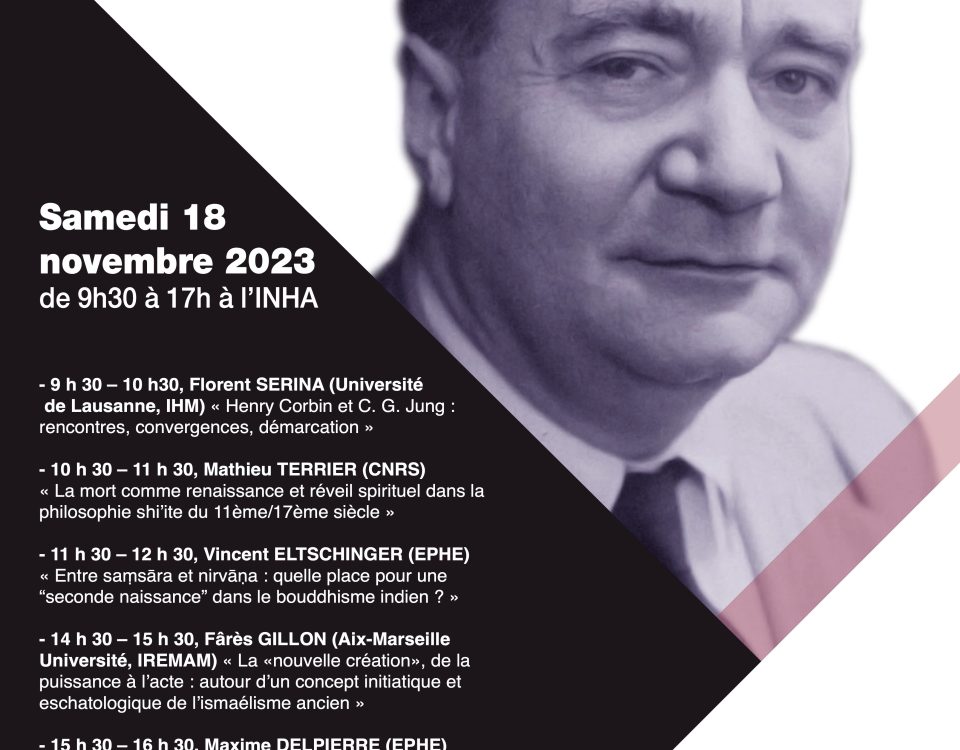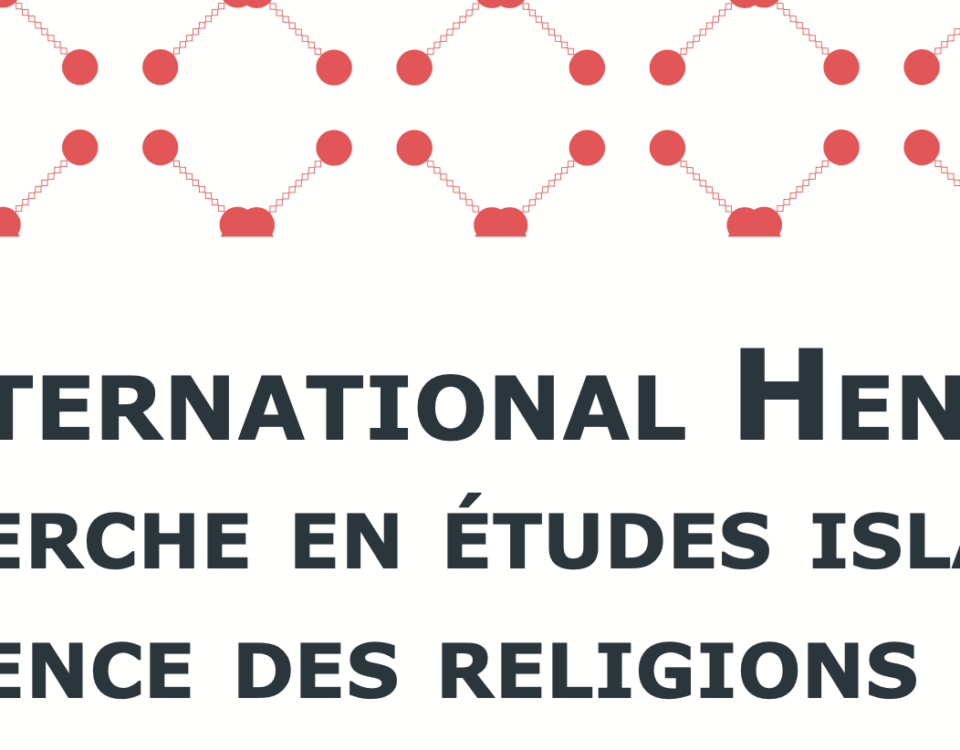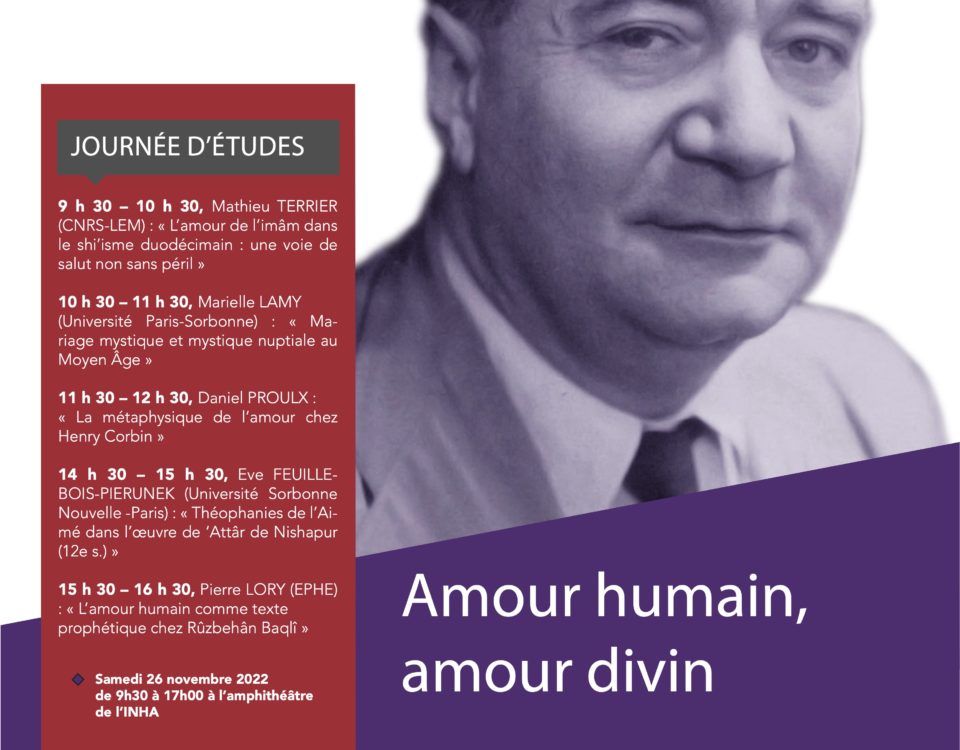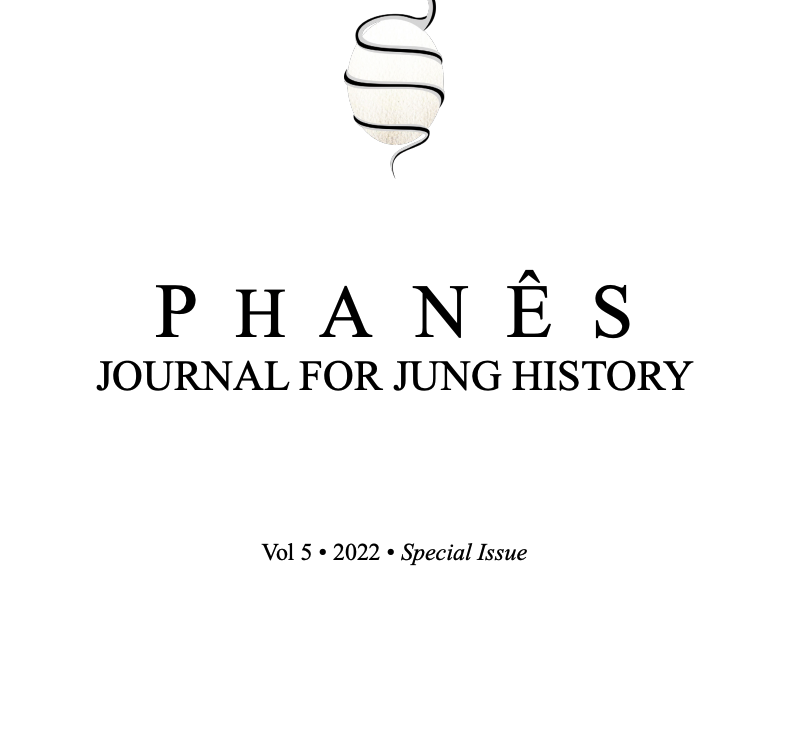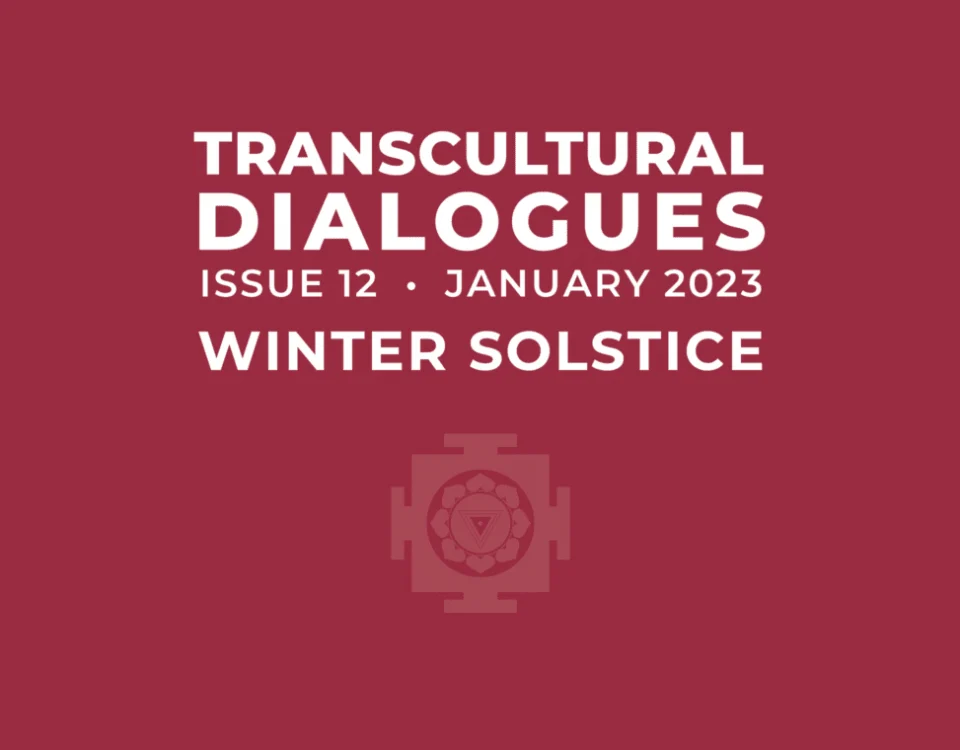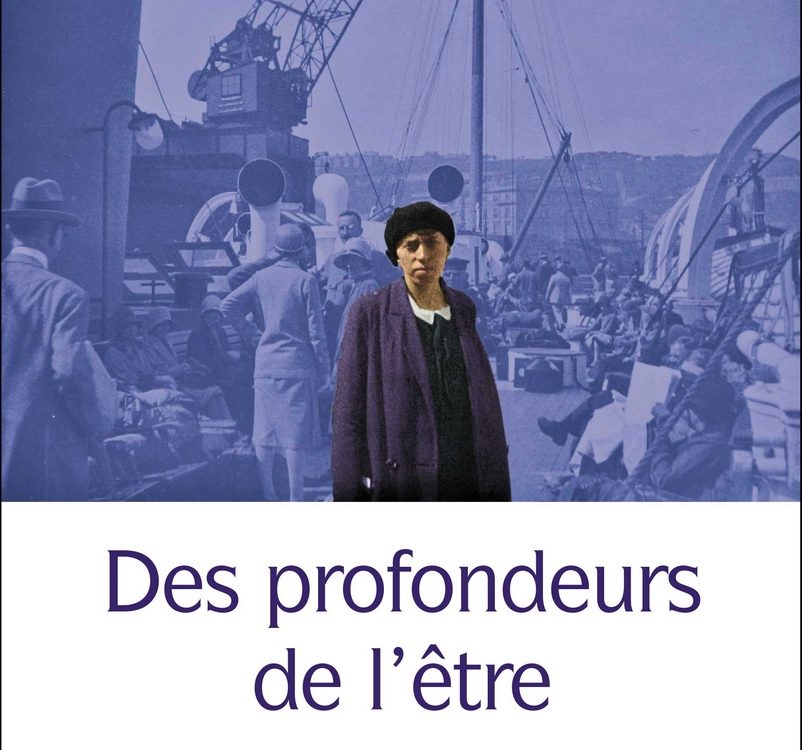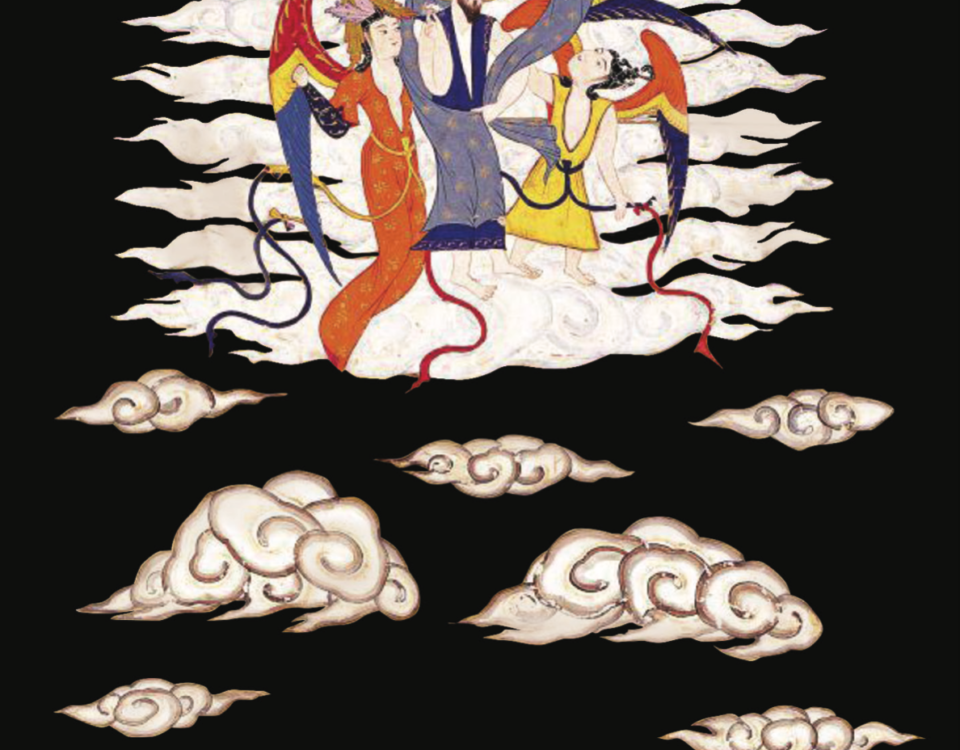Site officiel de l'Association des amis de Henry et Stella Corbin
Henry Corbin (1903-1978) - Stella Corbin, née Leenhardt (1910-2003)
Orientaliste et philosophe, il est l’un des penseurs les plus éminents du XXème siècle. Disciple d’Etienne Gilson et de Louis Massignon, à qui il succéda dans la chaire d’Étude de l’Islam de l’École Pratique des Hautes Etudes de la Sorbonne, il fut aussi l’un des piliers fondamentaux – avec C.G. Jung et M. Eliade, entre autres – du Cercle Eranos de 1949 à 1977, directeur du Département d’Iranologie de l’Institut Franco-Iranien de Téhéran de 1946 à 1970, professeur durant plus de trente ans à l’Université de Téhéran et membre fondateur de l’Université Saint-Jean de Jérusalem.
Henry Corbin a ouvert au regard de l’Occident l’existence d’un monde jusqu’alors complètement inconnu : la profonde spiritualité des grands mystiques shi'ites et la philosophie développée dans l’Orient du monde musulman, en particulier en Iran, après la mort d’Averroès. Son œuvre, centrée dans la connaissance et la spiritualité islamique, mais développée dans le contexte des trois religions monothéistes, comprend un nombre considérable d’études sur les rites, ainsi que des traductions et éditions de textes anciens inédits, arabes et persans, qu’il récupéra lui-même patiemment dans les bibliothèques de Turquie et d’Iran.
Actualités récentes
Séminaire « Esprit des lieux, lieux de l’Esprit » Henry Corbin : la philosophie iranienne des 11e et 12e siècles
Le 16 mars, Jean-Marc Ghitti présentera les travaux de Henry Corbin sur la philosophie iranienne des XIe et XIIe siècles à l'ancien Grand Séminaire du Puy. Il exposera la vision contrastante de Renan face à celle de Corbin.Élection de M. Christian JAMBET à l’Académie française
L'Académie française, lors de sa séance du 8 février, a élu M. Christian Jambet au fauteuil de M. Marc Fumaroli (F6), avec 25 votants. Après trois tours de scrutin, M. Jambet a été élu avec 13 voix, surpassant les autres candidats Jean-Marie Besset, Giovanni Dotoli, Hédi Kaddour, et David Khayat.Journée Henry Corbin 2023
18e Journée Henry Corbin (2023) : La seconde naissance. 18 novembre 2023.Prix international Henry Corbin 2023
Le prix international Henry Corbin de recherche en études islamiques et science des religions 2023 vise à récompenser un travail de niveau doctoral, ou une monographie. Le prix est d'une valeur de 5000 euros.Journée Henry Corbin 2022
17e Journée Henry Corbin - Samedi 26 novembre 2022 de 9h30 à 17h00 à l’amphithéâtre de l’INHA 2 rue Vivienne, 75002 Paris - Diffusion en ligne simultanée (Zoom)
Publications récentes
The Correspondence Between Mircea Eliade and Henry Corbin (1950-1981)
The Correspondence Between Mircea Eliade and Henry Corbin (1950-1981), introduced by Matei Iagher, edited by Matei Iagher and Florent Serina, translated from the French by Matei Iagher.The Invisible Teacher and His Disciples: C.G. Jung’s and Henry Corbin’s Approaches To “The Green One”
Corbin met Jung at Ascona in 1949. In 1953 he published a long, insightful review of Jung’s Answer to Job. Yet, for all the respect, if not devotion, that Corbin expressed to Jung, and for all the sympathy that Jung showed Corbin, their relationship was never an easy one. Is there any textual ground that might allow us to see deeper, and more insightfully, into their differences and commonalities? Daniela Boccassini proposes to focus on the figure of al-Khidr, “the green and greening one,” as invisible teacher, as the awakener of both soul and text to their forgotten identity: a basic gnostic theme. A comparative reading of Jung’s and Corbin’s approaches to this figure may help us find their meeting place, at the confluence of the two seas.Armelle Dutruc, Des profondeurs de l’être – Marie-Magdeleine Davy
Philosophe, écrivaine et maître de recherche au CNRS. Elle croise N. Berdiaev, L. Massignon, G. Marcel, R. Godel, H. Corbin, S. Weil, H. Le Saux, et tant d’autres.Henry Corbin’s Oriental Philosophy and Iranian Nativist Ideologies
Ahmad Bostani. This paper aims to explore the roots of the nativist discourse among Iranian intellectuals in the 20th century prior to the Islamic Revolution, a discourse based on Eastern authenticity and the felt need for a return to Islamic, Persian, or Asian traditions.Swedenborg i ezoterijski islam
Nouvelle traduction croate de : Henry Corbin, «Herméneutique spirituelle comparée - I. Swedenborg II. Gnose ismaélienne», dans Eranos-Jahrbuch - Das menschliche Drama in der Welt der […]
